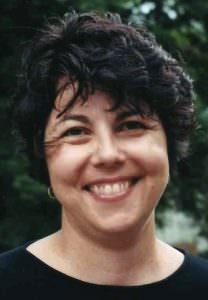“The Room Next Door” Production Designer Inbal Weinberg is the Architect of Pedro Almodóvar’s World
Production designer Inbal Weinberg perfected her meticulous eye over years of collaborations with filmmakers who “are serious about every detail,” including Derek Cianfrance, Luca Guadagnino, and Martin McDonagh. However, meticulousness took on a whole new level when Weinberg worked alongside renowned Spanish director Pedro Almodóvar on his first English-language feature, The Room Next Door, which opened in Los Angeles and New York on December 20 and expands to select cities on January 10.
Based on the novel “What Are You Going Through” by Sigrid Nunez, the film boasts many of Almodóvar’s signature touches, such as saturated color, melodramatic flourishes, and a plot that centers on the inner lives of women.
Oscar winners Julianne Moore and Tilda Swinton star as writers and old friends who reconnect in New York. Swinton’s Martha is a former war correspondent now battling untreatable cancer. She explains to Moore’s Ingrid, a novelist who fears death, that she’s decided to end her life before cancer does. Martha asks Ingrid to simply be in the next room of a rented house in upstate New York so Martha won’t have to die alone.
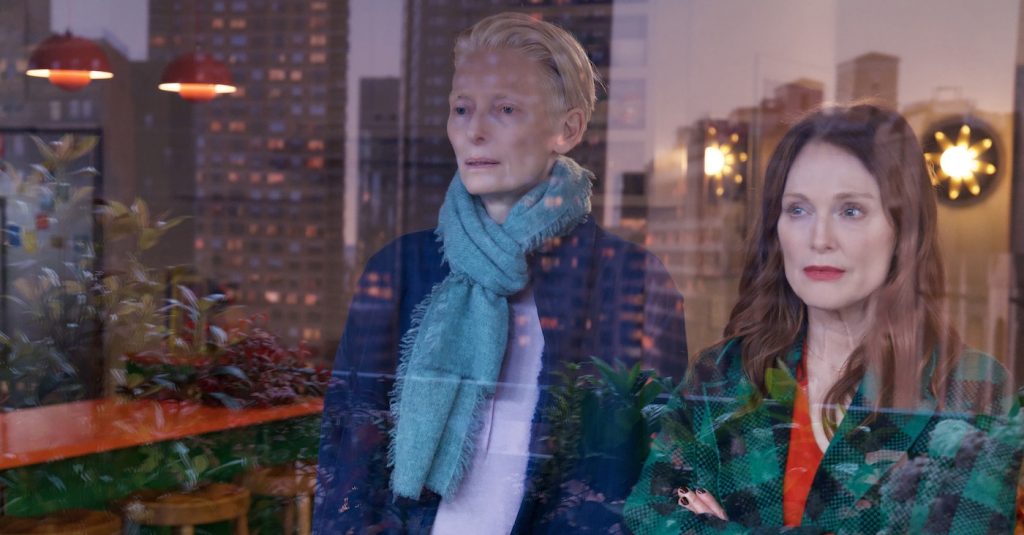
Image: Iglesias Más. © El Deseo. Courtesy of Sony Pictures Classics
It was important for Almodóvar, working in a culture and language outside his own, to have someone familiar with New York City exterior and interior locations. “I relished in my responsibility of being the New York representative. I’ve lived there for 20 years; it’s my favorite place in the world,” says Weinberg over Zoom from North Carolina, where she’s on location shooting Cianfrance’s latest, Roofman.
The Room Next Door has two crucial living spaces: Martha’s Manhattan apartment and the upstate house she retreats to with Ingrid. “I contacted friends and colleagues who are writers and artists, and I photographed the interiors of the apartments of female reporters and war correspondents to have interesting photos for Pedro to look at when I traveled to Spain,” Weinberg says. “He is always super curious about how people live. He was open to exploring, so we went back to some of these homes with his team.”
Weinberg researched many houses in upstate New York, Long Island, and New England, where the script had originally set the house that Martha rents. She presented these ideas and options to Almodóvar, who, not surprisingly, gravitated quickly to a contemporary, modernist home. “We went into that world of modernism. I sent him references of contemporary or iconic mid-century homes. We traveled to three or four modernist houses built by architects like Frank Lloyd Wright, Marcel Breuer, and Gerald Luss, who was one that he really enjoyed,” says Weinberg.
Almodóvar decided to recreate a modernist house in Spain. “I would have gladly built a house in Spain, but it was a huge endeavor for a fairly small film. It was too risky,” says Weinberg. As the team scouted contemporary houses in Spain, the production designer had to consider and point out to the Spanish crew that the landscaping and vegetation had to pass for upstate New York.
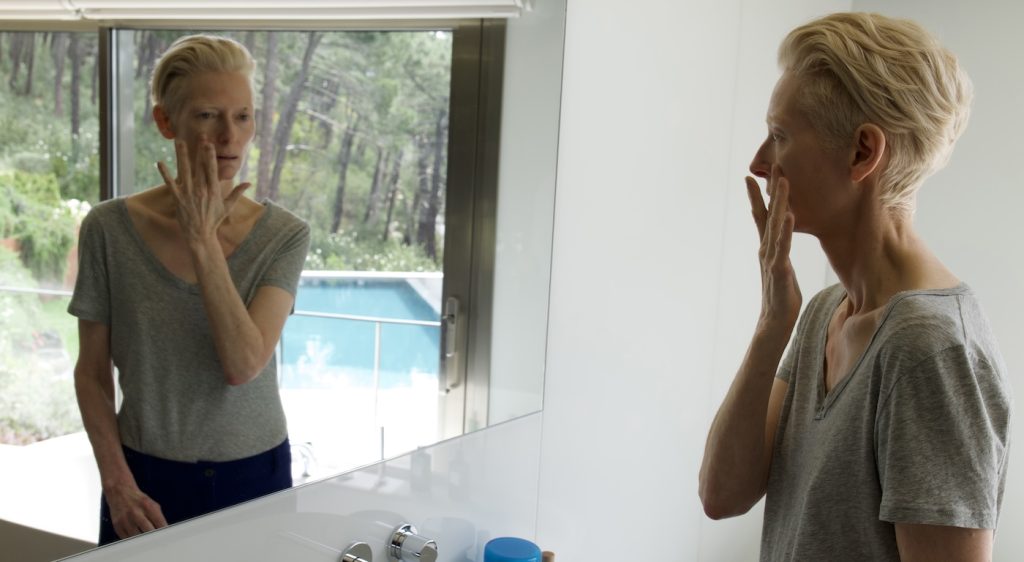
“Their world is Mediterranean. I grew up in Israel, and the vegetation in Spain is similar. But the Northeast [of the US] is wildly different; it looks nothing like the vegetation in Spain,” she says. “We found an area with pines. They were not the same pines as in New York, but it could pass. Then we had to do the exteriors. It isn’t easy to express to a production company why they had to spend money to [replace] flowers and plants that were too Mediterranean and too manicured. No one thinks of landscaping with production design.”
The modernist house they settled on for shooting was called Casa Szoke, nestled at the base of mountains in Madrid near the historic town of San Lorenzo de El Escorial. Both Weinberg and Almodóvar were drawn to the house’s “unusual angles and sloping ceiling” and “something interesting about breakage in the views, the extreme angles,” says Weinberg. “There was a lot going on … so much tension. So the architecture mirrored the drama.”
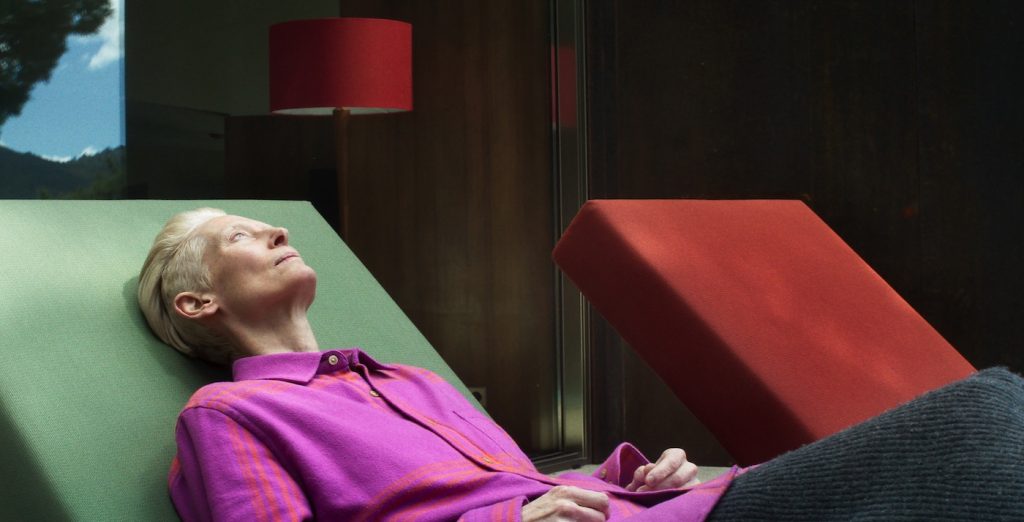
Since contemporary architecture can sometimes seem cold, she noted, the design team repainted the house’s white walls with color, replaced blonde wood with darker, warmer wood, and clad the existing built-in furniture in bright colors. Much of these touches are movie-set temporary, so everything is put back to its original state when the homeowners return, Weinberg says.
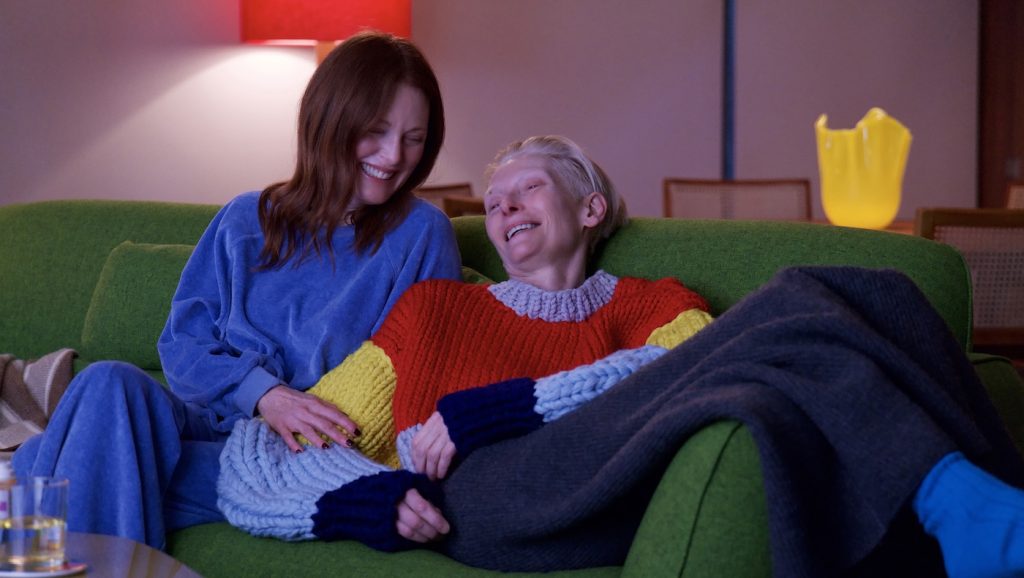
Then there are the tiny, specific details that likely escape all but the most eagle-eyed of moviegoers but that give Almodóvar movies their aesthetic.
“Pedro is very tactile. He always has to feel a fabric, whether it’s for wardrobe or for furnishings. He has the eye of a decorator,” Weinberg says. “He really loves the richness of fabrics and color, so it is an enjoyable part of filmmaking for him being embedded in the design process.”
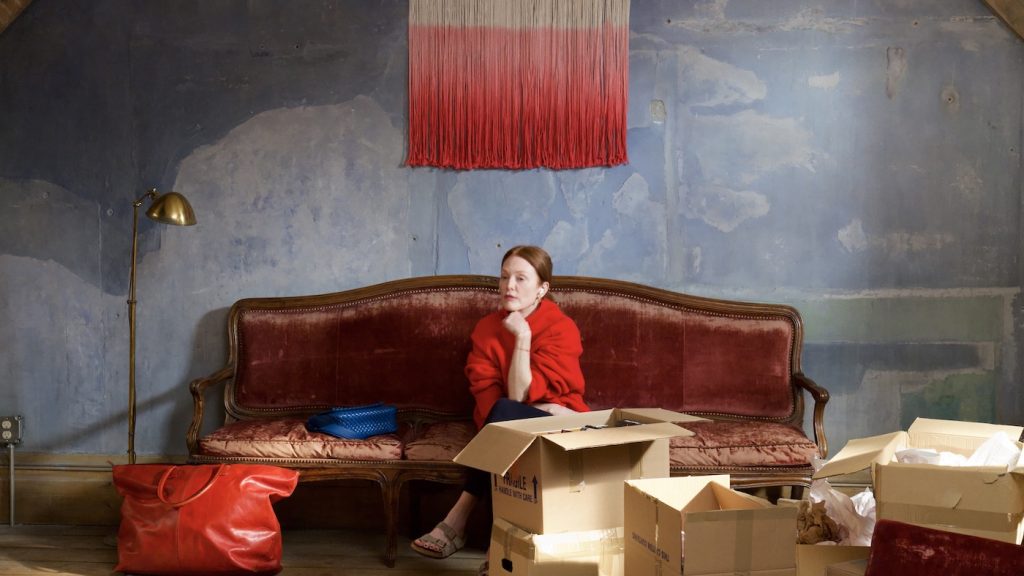
Since The Room Next Door is about two writers, it comes as no surprise that Almodóvar would be “extremely specific” about every book in both houses, even if they would never be seen on screen.
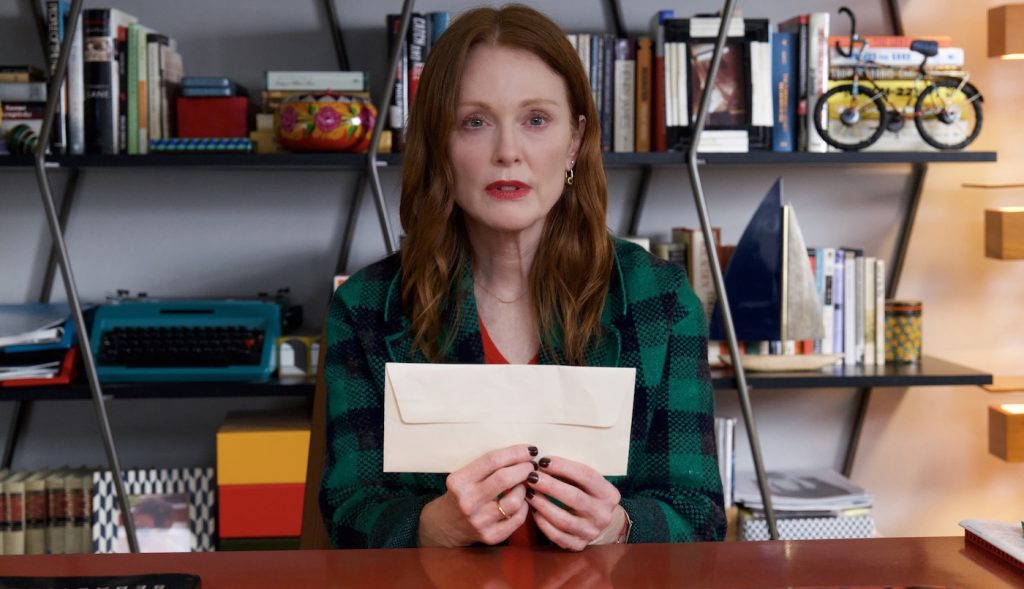
“He cares so much about the bookshelves. Martha was a war correspondent, so I took pictures of the books in the homes of war correspondents. We purchased those titles and shipped them in crates to Spain,” says Weinberg. “Pedro reads so much; he is super on top of current literature. He trusted me, I think, because I am also a voracious reader. It was a huge effort. Even the coffee table books were carefully picked. He needs to see about fifty titles before choosing.”
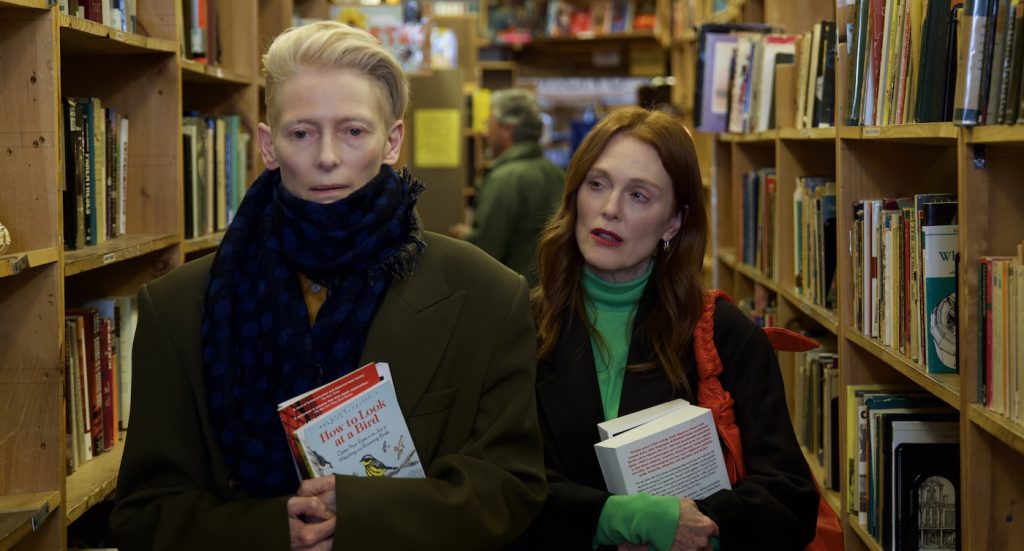
Even for often monochromatic New York City, Almodóvar almost always opted for the most colorful option for the sets, furniture, and decor, says Weinberg.
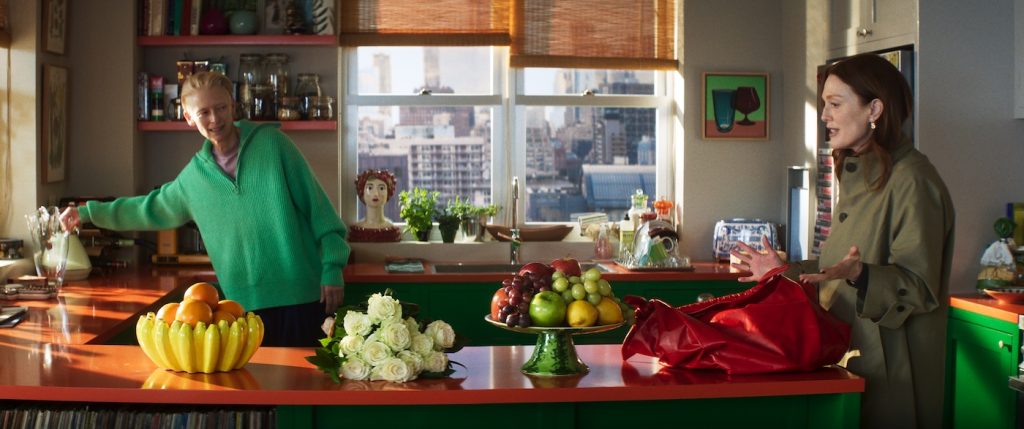
“I come from a social realism background but I reassured myself that this was not a documentary, it was an Almodóvar film and people are expecting certain things,” she says. “They are not going to scrutinize; he’s managed to build his own universe at this point. So we are inviting people into his version of the story in New York.”
The Room Next Door opens in select cities on January 10.
Featured image: L-r: JULIANNE MOORE as Ingrid. (Image: Iglesias Más. © El Deseo. Courtesy of Sony Pictures Classics.) TILDA SWINTON, Director PEDRO ALMODÓVAR, JULIANNE MOORE on the set. (Image: Iglesias Más. © El Deseo. Courtesy of Sony Pictures Classics.) TILDA SWINTON as Martha. (Image: Eduard “Edu” Grau. © El Deseo. Courtesy of Sony Pictures Classics


